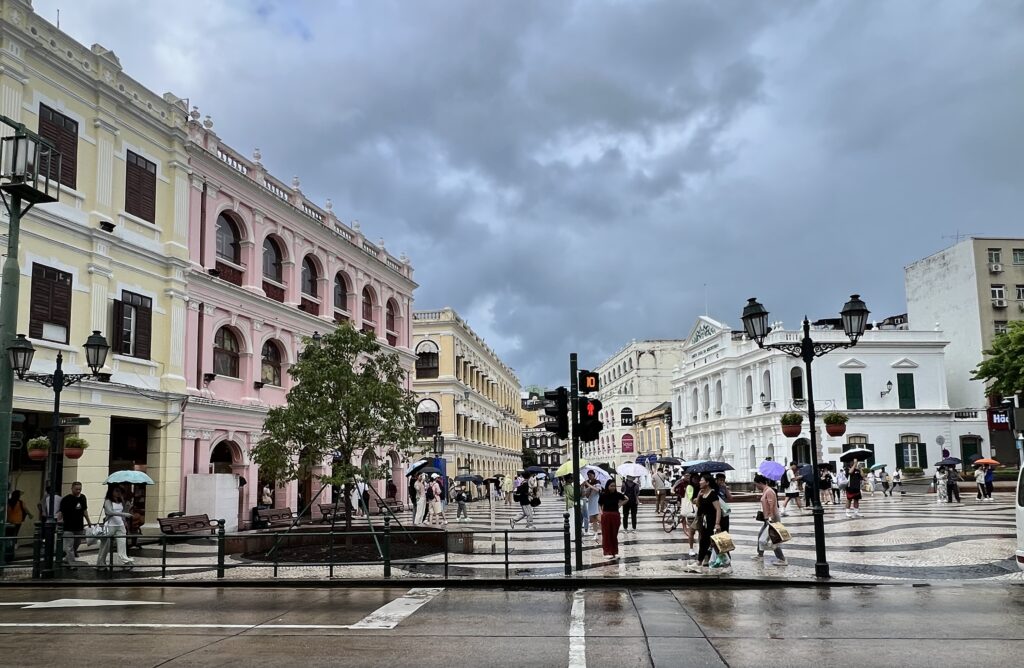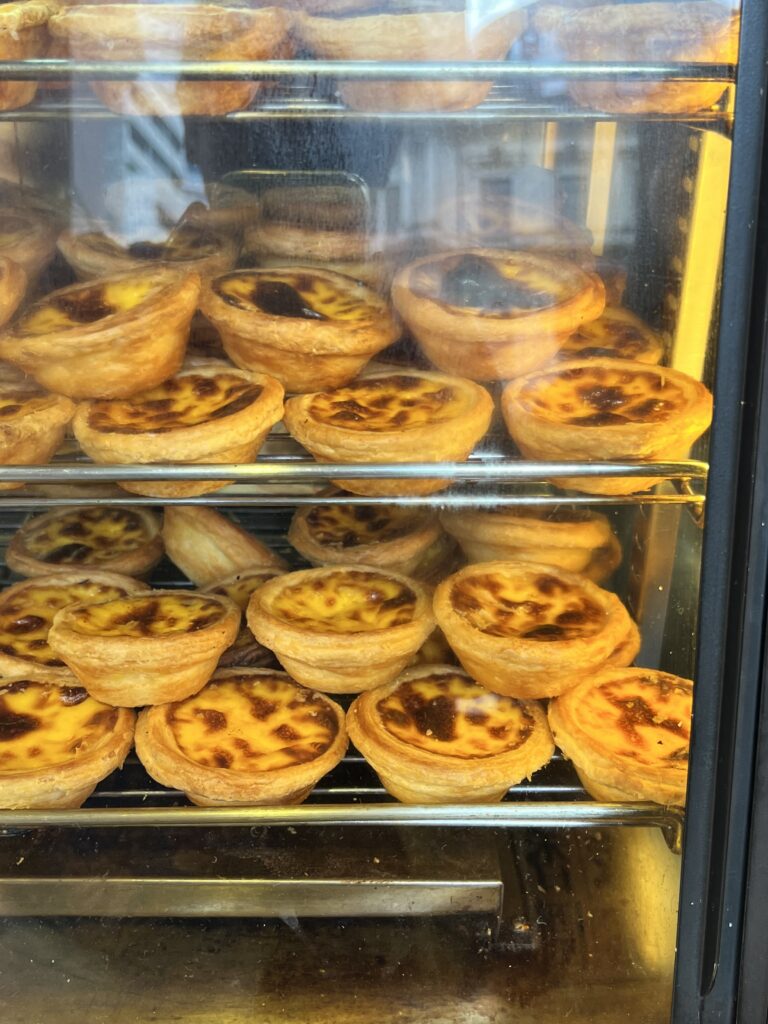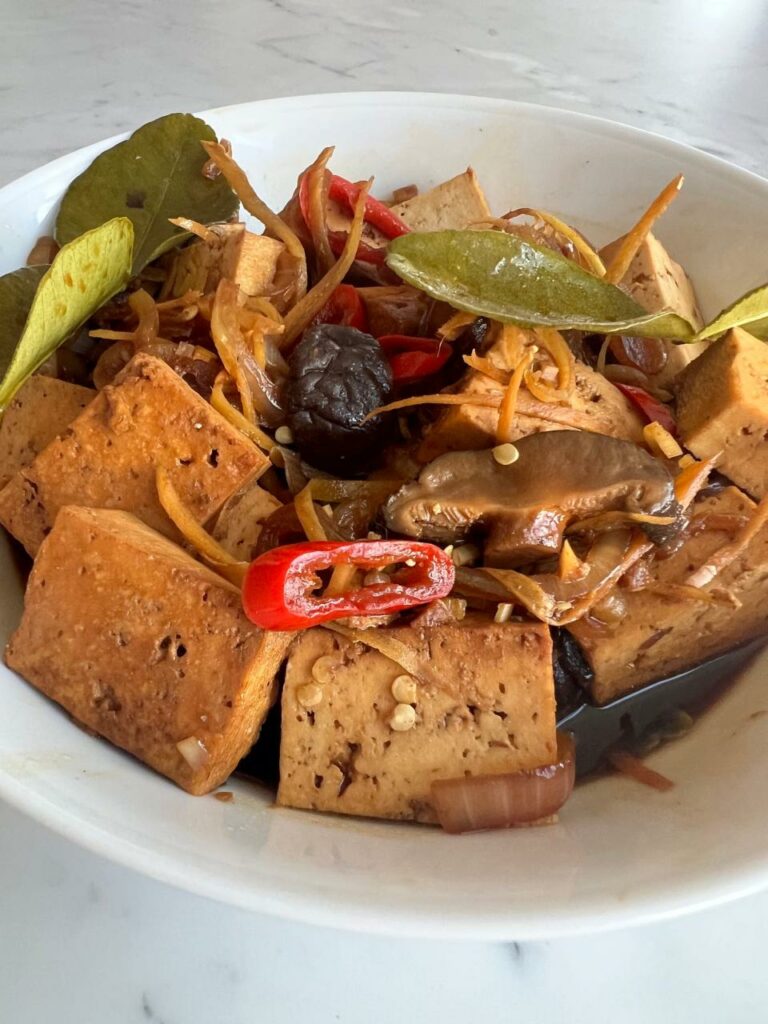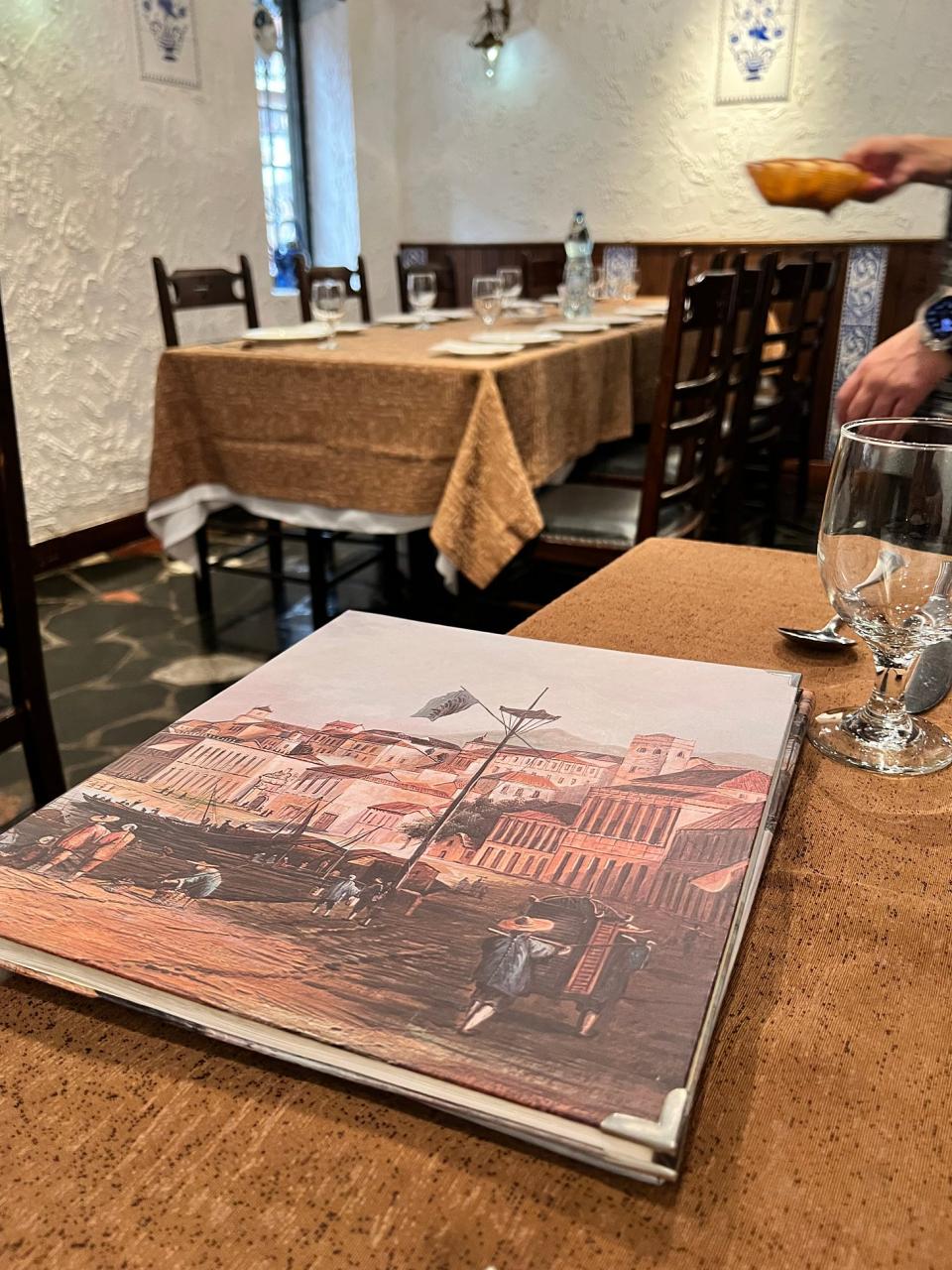
I have yet to make it to Portugal. And when I do, I will probably say that there are so many things there that remind me of Macau. It will be just the same way I felt when I saw Paris for the first time and innocently quipped, in awe and astonishment, that those Haussmann rooftops and boulevards looked like Shanghai. I had lived in Shanghai way before I made my first trip to Paris.
I had always viewed Macau as the jetfoil day trip to a spot more famous for casinos, with the bare facade of St. Paul’s ruins standing on a hilltop. This past August, I was determined to make it an exploratory eating trip, and I begged my daughter to come along so that we could eat more.
Portugal “returned” Macau to China in 1999. For 500 years prior, the Portuguese had governed the port city which was given by China in exchange for safeguarding the entry to the Pearl River delta from pirates. The Portuguese had set up trading bases along the Pearl River and had also acted as middlemen between China and Japan, two kingdoms who traded but would not deal directly with each other.
The roots of Portuguese exploration stemmed from their quest to find precious spices. For at least 2000 years, the European world had acquired ginger from China, cardamom and pepper from India, cinnamon from Ceylon, as well as cloves, nutmeg and mace from the Indonesian archipelago. Spices could possibly preserve meat for the winter months and flavour food but most of all, spices were often viewed as the ultimate status symbol, especially because it took so much effort to transport the spices back to Europe. This coveted trade had been dominated by Arab and Indian Muslim traders, at the expense of resentful Christian trading counterparts from Europe. The Crusades failed to capture Jerusalem and this worsened tensions between the Muslims and the Christians, with the Muslims refusing to disclose the sources of their spices.
The Ottoman conquest of Constantinople in 1453 effectively blocked the land routes between Europe and Asia, forcing the Europeans into maritime trade in search of these commodities. This spurred the Age of Exploration and the spice race began, primarily between the Spanish and Portuguese. The 1494 papal Treaty of Tordesillas split the exploration into two hemispheres divided by a line in South America, close to Brazil. The hemisphere west of Brazil would belong to Spain while the east was assigned to Portugal. In 1498, the Portuguese explorer Vasco de Gama sailed around the Cape of Good Hope and opened up the eastern sea route to Asia for the Portuguese, a key milestone for the lucrative spice trade.
By the 17th century, Portugal had become a major colonial power. They had Mozambique and Angola in Africa, Goa in the west coast of India, Macau and Malacca in Asia. The Portuguese colonial administrators moved around, as did the traders and travellers. At each of these destinations, new cooking ideas and techniques came about to satisfy the palates and longing for food from back home, utilising the local ingredients now new to them. This mirrored what was happening with Peranakan cuisine in the course of history.
Within Asia, the Portuguese traversed between Goa, Macau and Malacca. Many administrators had moved from Malacca to Macau and they brought with them their families and domestic helpers. In many cases, this included the wives who were local Malaccan women whom they had married in a bid to convert them to Catholicism.
Portuguese cuisine could not be completely replicated in Macau because of the available range of ingredients. Over time, the Macanese would categorise any food as “Portuguese” so long as the basic local produce was accompanied by a touch of an ingredient that came via the sea routes plied by the Portuguese. Thankfully, with the constant movement between various outposts, Macanese cooking could rely on ingredients that arrived by boat, including those from Portugal such as olives and bacalhau – the preserved codfish staple for sailors. More spices were also applied to Macanese food than Portuguese food, a reflection of their association with Goa, Malacca and the Indonesian islands.
Whereas Portuguese fish dishes used fish from the Atlantic, Macau relied on freshwater substitutes from China. Similarly, the different offerings of vegetables resulted in more local meat dishes than vegetable ones, within the repertoire created in Macau.
Balichao, most likely a derivative of the belachan (fermented krill paste) that the Malaccan women took with them to Macau, included European ingredients such as brandy, bay leaves and lemons, along with spices such as chillies, peppercorns and cloves.
Tacho, reminiscent of the northern Portuguese cozido (boiled meat and enchido sausage boiled with cabbage, potatoes, and root vegetables) included chicken, pig’s trotters, beef, Chinese lap cheong sausages, waxy duck, cabbage, daikon and sweet potatoes, along with balichao, cumin, coriander and white pepper,
Vaca estufada included beef and potatoes slow braised with rosemary and bay leaf with cinnamon and star anise that came from Ceylon and Indonesia.
African chicken, synonymous with Macau, is a concoction with spices and coconut milk, yet an adaptation from Piri Piri from Mozambique.

Much has been written about the influence of Portuguese cooking on Asian desserts, from the use of ovens to bake goods, to the large quantities of egg yolks, made famous with the egg tart. Egg whites had been used to prepare stucco to build the majestic facades of churches and buildings, many which still exist in these former colonies. Original Portuguese cakes and desserts were also often concocted using coconut milk instead of cow’s milk.
Macanese food today can be found in a few noteworthy restaurants that have existed for decades. These restaurants also include Portuguese dishes, as well as Chinese dishes, reflecting Macau as a marriage of the two cultures, plus the spicy dose of peripheral players as far as Mozambique and Malacca. Like Peranakan food, Macanese cuisine tells a powerful story of global trade, a past history that intertwines continents and intermarriage, resulting in the fusion of cultures. The influence lives on in this part of the world. The recipe below illustrates the lasting impact that Portugal once had in this region, through just one word in the vocabulary – “Tempero”.

Tempra
Though not Macanese, this is a dish that has a Portuguese title and uses belachan. ‘Tempra’ is a Malay word related to the Portuguese word ‘tempero’ which means ‘seasoning’ or ‘gravy’ in English.
The sauce is garnished with red chilli and sliced onions. The main component would be thin slices of pork or chicken, even chicken wings, shrimp or a whole fried fish. In this instance, I use firm tofu which adds another dimension – a dish inspired by a Portuguese word, yet incorporating a Chinese ingredient.
makes 4 to 6 servings
1 tablespoon dark soy sauce
1 tablespoon lime juice
30g (1 ounce) belachan, toasted
½ teaspoon coarse salt
1 teaspoon sugar
340g (12 ounces) firm tofu
1 tablespoon canola oil
2 cloves garlic, minced
2.5cm (1 inch) ginger, about 15g (½ ounce) skinned and julienned
1 stalk lemongrass, upper stalks and outer layers removed, thinly sliced
1 red chilli, sliced
1 medium yellow onion, peeled and sliced
3 kaffir lime leaves (daun limau purut)
175ml (¾ cup) water
- Combine the dark soy sauce, lime juice, belachan, salt and sugar in a bowl.
- Heat a skillet and add some of the oil. When the oil is glistening, sear the tofu on both sides. Transfer the tofu to a chopping board and cut the tofu into 2.5cm (1 inch) cubes.
- Heat a saucepan and add the remaining oil. When the oil is glistening, fry the minced garlic, ginger, lemongrass, sliced red chilli and onion until fragrant, and the chilli and onion have softened.
- Add in the tofu cubes, the bowl of sauce, followed by the lime leaves. Stir to combine.
- Pour in the water and let it boil briefly, then turn down to simmer for about 5 minutes for the tofu to soak in the sauce.
Bibliography
Conlon, Abraham; Lo, Adrienne; Amano, Hugh. The Adventures of Fat Rice. Ten Speed Press, 2016.
Hutton, Wendy. The Food of Love: Four Centuries of East- West Cuisine. Marshall Cavendish, 2007.
Jackson, Annabel. Taste of Macau; Portuguese Cuisine on the China Coast. Hippocrene, 2004.
